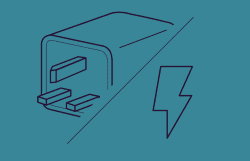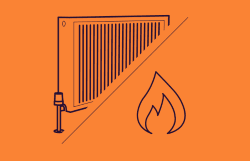Are you unsure when your energy tariff is set to expire? Don’t worry, you’re not alone. Many people are unaware of when their energy contract is coming to an end, and as a result, they may be paying more than they need to for their energy. In this article, we’ll show you how to find out when your energy tariff is ending and give you some tips on how to make the most of your energy contract.
How do I find out when my energy tariff ends?
There are a few ways you can find out when your energy deal ends:
Check your bill
If you’re a customer of a major energy provider, you can usually find out when your tariff ends by looking at your bill. Most energy companies include the end date of your tariff on your bill. Alternatively, you can contact your energy provider and they should be able to provide you with this information. Look for a section labeled “Tariff Information” or “Contract End Date.”
If you’re a customer of a smaller energy provider, you may have to do a bit of digging to find out when your tariff ends. Some of the smaller energy providers don’t include the end date of your tariff on your bills. In this case, you should contact your energy provider directly and ask them when your tariff ends.
If you’ve recently moved home and are yet to switch energy providers, then you should also check your old energy bills to see when your tariff is coming to an end. This will help you to ensure that you don’t end up paying for energy that you’re not using.
Check your account online
If you have an online account with your energy provider, you should be able to view your tariff information there. Look for a tab or section labeled “Tariff,” “Contract,” or “Billing.”
Contact your energy provider
You can also get in touch with your energy supplier directly to ask about the expiration date of your tariff. You can do this by phone, email, or through their online customer portal. Be sure to have your account number and personal details handy when you reach out.
What should I do when my fixed rate energy tariff ends?
When your fixed rate energy tariff ends, you have a few options:
- You can contact your energy supplier to see if they have any new fixed rate tariffs available. This can help you to lock in a good rate for a set period of time, giving you some price stability helping you save money on your energy bills.
- You can shop around for a new energy supplier. This can be a good way to find a better energy plan, as different energy companies offer different rates and tariffs. If you want to switch, there are a number of comparison websites that can help you to compare energy tariffs from different suppliers to ensure you choose the best energy deal.
- You can switch to a variable rate tariff. This type of tariff does not have a fixed rate and can change from month to month. While this means that your energy bills may vary, it can also offer flexibility and the potential for lower rates if energy prices go down.
- You can consider switching to a renewable energy tariff. This type of tariff can be more expensive than a traditional energy tariff, but it can help you to reduce your carbon footprint and support the transition to renewable energy sources.
What happens if I don’t switch after my tariff end date?
If you don’t switch after your tariff end date, your energy supplier will typically move you to a default tariff. This is usually a standard variable rate tariff, which means that the rate you pay for energy can vary from month to month.
Default tariffs are often more expensive than other tariffs that are available, so it’s usually a good idea to switch to a new tariff or supplier if you can find a cheaper energy deal. If you don’t switch, you could end up paying more for your energy than you need to.
If you’re not sure what to do when your tariff ends, you can contact your energy supplier for more information, or shop around for a new deal. It’s always a good idea to compare different tariffs and suppliers to find the best deal for your needs and budget.
Can I switch business energy providers before my tariff end date?
Yes, you still switch business energy providers before your tariff end date. However, you may be required to pay an early termination fee if you switch before the end of your contract.
Early exit fees are designed to compensate the energy supplier for any costs associated with ending your contract early. These fees can vary, so it’s a good idea to check with your current supplier to find out how much you would need to pay.
If you do decide to switch business energy providers before your tariff end date, be sure to carefully consider the costs and benefits of doing so. You’ll want to make sure that any potential savings from switching outweigh the cost of any early termination fees.
It’s also a good idea to carefully review the terms and conditions of any new tariff or contract before signing up. This will help you to understand any fees or charges that may apply, as well as any terms and conditions that could impact your business.
How long will it take for a business energy switch To be completed?
The length of time it takes for a business energy switch to be completed can vary depending on a number of factors, including the type of energy you use (electricity or gas), the complexity of your business’s gas and electricity needs, and the process followed by the energy supplier you choose.
In general, your new supplier will contact you with a switching date. It can take up to 21 days to complete a switch. In most cases it’s around 17 days.
The process typically involves several steps, including:
- Choosing a new energy supplier or tariff: This can involve comparing different deals and deciding which one is the best fit for your business. You can select which type of energy tariff you want, whether a fixed tariff, standard variable tariff, variable rate energy tariffs or economy seven tariff.
- Signing a new contract: Once you’ve chosen a new energy supplier or tariff, you’ll need to sign a new contract. This will outline the terms and conditions of your new energy supply, including the rate you’ll pay and any fees or charges that may apply. Then your switch to a new deal can take place.
- Transferring your energy supply: Your new energy supplier will then work with your current supplier to transfer your energy supply over to them. This can involve disconnecting your current supply and installing new meters or equipment if necessary.
- Setting up billing and payment: Your new supplier will also set up billing and payment for your new energy supply. This may involve setting up a new account and establishing how you’ll pay your bills.




